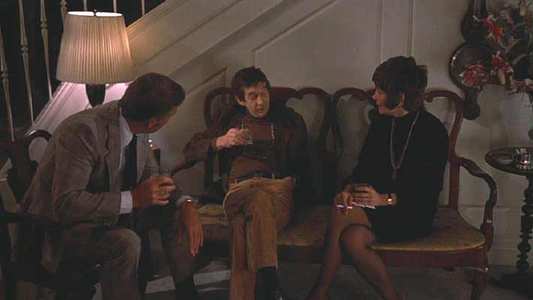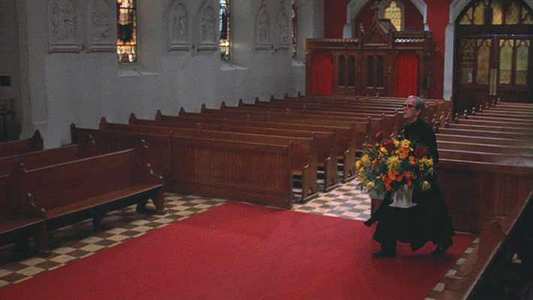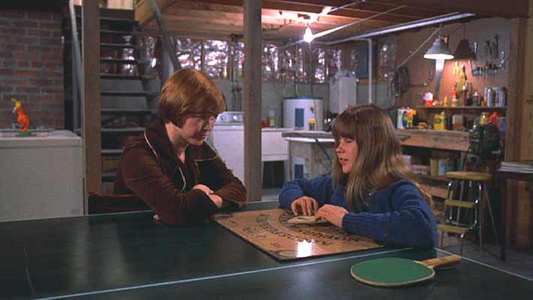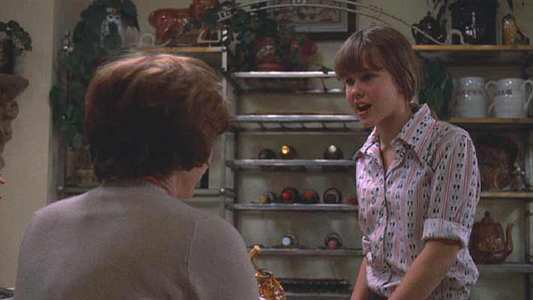Review of Exorcist, The: The Version You`ve Never Seen
Introduction
This film needs no introduction! To some (or most), this is probably the scariest film committed to celluloid. The story tells of a young white, middle class girl, who gets possessed by a demon. The changes this creates in her, and the eventual exorcism that takes place.
William Friedkin directs this with a fly-on-the-wall documentary style of the events that unfold - to the point where the medical examination of Regan’s brain was used for medical students as a perfect example of how to conduct such a procedure!
It has a slow build up. Almost an hour passes of story and character development before all hell is unleashed. By this time you have gotten to know the locations, the people and their motives – it is all explained very clearly. And like the slow “clank clank” of a roller-coaster getting to its height for the final descent – is very necessary to build up the tension of the ride that you have face before you get off.
And when the second half of the film is unleashed, you wish you’d taken the kiddy ride! The descent of the little girl into possession is now much quicker, much more terrifying and eventually soul destroying. The film has aged in its 27 years and if you watch it with a bunch of mates and some lagers the effect of the film will be lost. However, sit on your own, turn the lights down, put the film on, watch and you will believe.
I have both versions of the film, and I have to say, on the whole this is the better one. The story is a lot more coherent with the extra scenes added in. The most important of which is the nervous disorder scene, chapter 14 (not as everyone would have you believe, the infamous spider walking scene). This disorder scene explains the huge plot hole in the original where Regan comes down and urinates on the carpet. She then asks her mother later “what’s wrong with me”. Her mother said, “It’s like the doctor said, its just nerves”. What doctor? What nerves? When did this happen? Obviously her strange behaviour starts to show a little earlier in the new version, and with the doctors scene added, this conversation makes a lot more sense.
The spider-walking scene is good, and dramatic effect is built, finally proving to Regan’s mother that the doctors are wrong, and their medical explanations are not accurately describing her daughters’ illness. It is effective but not that necessary; however, because of the notoriety of the scene it really needed to be added so the completists can breathe a sigh of relief.
There are a number of extra subliminal messages that have been added –demonic faces flashing within the house alerting you to the presence of “something else”. These, whilst not in the original, were very effective and not out of keeping with the rest of the film. One scene I found a little disconcerting was when Regan’s face morphed during the hypnosis scene. Obviously this sort of technology was not available in 1973, and I didn’t feel that it was necessary here. Luckily this is the one of the few times the director has decided to add CGI effects into the film, so it is noticeable, but the film hasn’t radically altered because of it (thankfully!)

Video
Well, Warner Bros. has really invested some time and money restoring this print to its original glory. Probably better than its original glory in fact! This is a very clean print with high levels of detail. It does have that “digitally remastered” feel to the picture. The images are too clean. Film stock in the 70s was never able to discern that much detail. However the picture benefits from it, and I’m certainly glad they spent the time doing it. The subdued pallet of the film is captured excellently, and this blandness draws you into the film allowing you to sink into this drab, mundane world that you know all too well. It creates a reality, a sort of everydayness to it that brings it into the world that we live in. We can relate to it, and this eventually makes the shocking possession scenes feel as though this really happened.
The picture also improves slightly on the Special Edition release of the film a couple of years ago. There is less MPEG blockiness than on the original. Witness the opening scene in Iraq where you are greeted by the blazing sun. In the special edition, this has a very processed feel about it, and you can see large pixels of colour changing around the sun as it is revealed to the viewer. This is less abundant in this new version.

Audio
And this is one where you’ll sit up and listen! I have the original, on DVD and laserdisk, and being one of my favourite films, I have watched both of these versions a number of times. The sound on this version is a different story entirely – the film has been remixed in Dolby Digital Ex, and it’s like someone turned on the rear speakers when they had forgotten to in the original. Whereas the original DVD creates a presence in the background, it is unclear and comes across as fairly monaural. This new version absolutely sparkles with extra life and excellent separation in all 5 speakers (6 if you have them – I unfortunately don’t).
One of the effects of the music on this film is to create a sense of claustrophobia, with the harsh shrieking violins bearing down on you before the main credits appear at the start of the film. I thought they were close enough in the original, however now they are positively sitting on my shoulder! This continues throughout the film, one example is of planes flying overhead at the start of the film that I never heard before. Background chatter is now more discernable, however, most importantly the main dialogue is clearer and the main sound effects are all the more present creating a new tension for me. As I said earlier, I have watched this film a number of times, so for the sound to be able to crank up the tension for me once more was an added bonus.

Features
The main aspect of the extra features is a new feature-length commentary by the director William Friedkin. This was a big disappointment I have to admit. Whilst I was relishing the idea of Friedkin talking about this film again, I found the commentary to be rather bland. For the majority of the time Friedkin tells you what is going on in the film, and where the story is going which I can figure out for myself. This is a big waste of time.
There were a couple of interesting aspects to the feature commentary – he states that he used the imagery of Father Karras rising, and you always see him coming “up” as he enters the screen. He mentions the scenes that were added, but only to tell you what this scene is showing you; not why it was added, or the arguments the director and writer/producer had over the editing of the original film. This is all told in a lot more detail on the original DVD.
Other features are a few trailers and on-screen bumph about some film facts and the differences between the director and writer/producer. As I have already mentioned, these are explained much more clearly in the original version of the film with Mark Kermode’s excellent BBC documentary The Fear of God: The Making of the Exorcist.

Conclusion
As I have already said, the film mainly benefits from the additions, and I’m glad that the writer William Peter Blatty has eventually got the version of the film that he wanted to see. There are additional scenes that I agree should have been included, but others that I agree with Friedkin and should have been left out. It is mainly more coherent however and still worth watching. The picture is just as good as the original DVD, however the sound is definitely the main reason why you would want to buy this version of the film. It is radically different, and the film benefits from it tremendously. The extra features add nothing that the original didn’t offer and the commentary was, to me, a disappointment.
So which version of the film do you buy? If you’re not an advocate of extra features, but just want the best picture and sound, this is definitely the version you need to buy. If you would like to have an insight into the background of this film, the original version is worth getting. The Mark Kermode documentary and feature length commentary by Friedkin is worth the price of the disk alone I promise you. However, if you’re a complete Exorcist nut, and just can’t get enough of the horror this film is able to chuck out – there is only one answer… buy both DVDs… and the laserdisk!
Your Opinions and Comments
Be the first to post a comment!